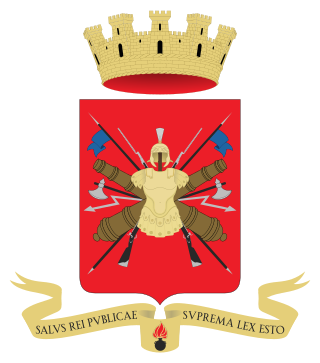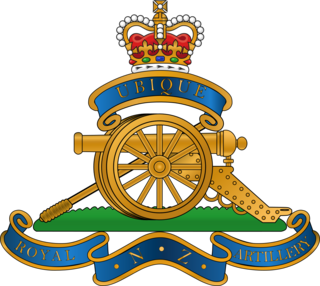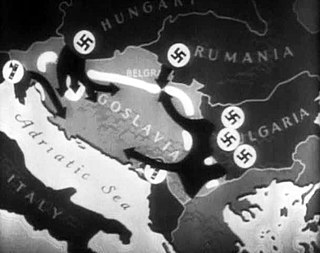The Infantry of the British Army comprises 49 infantry battalions, from 19 regiments. Of these, 33 battalions are part of the Regular army and the remaining 16 a part of the Army Reserve. The British Army's Infantry takes on a variety of roles, including armoured, mechanised, air assault and light.
A division is a large military unit or formation, usually consisting of between 6,000 and 25,000 soldiers. In most armies, a division is composed of several regiments or brigades; in turn, several divisions typically make up a corps.

A battalion is a military unit, typically consisting of 300 to 1,000 soldiers commanded by a lieutenant colonel, and subdivided into a number of companies. The typical battalion is built from three operational companies, one weapons company and one HQ company. In some countries, battalions are exclusively infantry, while in others battalions are unit-level organisations.

A regiment is a military unit. Its role and size varies markedly, depending on the country, service and/or a specialisation.

A brigade is a major tactical military formation that typically comprises three to six battalions plus supporting elements. It is roughly equivalent to an enlarged or reinforced regiment. Two or more brigades may constitute a division.
Corps is a term used for several different kinds of organization. A military innovation by Napoleon I, the formation was first named as such in 1805. The size of a corps varies greatly, but two to five divisions and anywhere from 40,000 to 80,000 are the numbers stated by the US Department of Defense.

The 5th Canadian Division is a formation of the Canadian Army responsible for the command and mobilization of most army units in the provinces of New Brunswick, Nova Scotia, Prince Edward Island and Newfoundland and Labrador; as well as some units in Kingston, Ontario. The division is recognized by the distinctive maroon patch worn on the sleeve of its soldiers.

The Italian Army is the land force branch of the Italian Armed Forces. The army's history dates back to the Italian unification in the 1850s and 1860s. The army fought in colonial engagements in China, Libya, Northern Italy against the Austro-Hungarian Empire during World War I, Abyssinia before World War II and in World War II in Albania, Balkans, North Africa, the Soviet Union, and Italy itself. During the Cold War, the army prepared itself to defend against a Warsaw Pact invasion from the east. Since the end of the Cold War, the army has seen extensive peacekeeping service and combat in Afghanistan and Iraq. Its best-known combat vehicles are the Dardo infantry fighting vehicle, the Centauro tank destroyer and the Ariete tank and among its aircraft the Mangusta attack helicopter, recently deployed in UN missions. The headquarters of the Army General Staff are located in Rome opposite the Quirinal Palace, where the president of Italy resides. The army is an all-volunteer force of active-duty personnel.

The Royal Regiment of New Zealand Artillery is the artillery regiment of the New Zealand Army. It is effectively a military administrative corps, and can comprise multiple component regiments. This nomenclature stems from its heritage as an offshoot of the British Army's Royal Artillery. In its current form it was founded in 1947 with the amalgamation of the regular and volunteer corps of artillery in New Zealand. In 1958 in recognition of services rendered it was given the title the Royal Regiment of New Zealand Artillery.

The Royal Regiment of Australian Artillery, normally referred to as the Royal Australian Artillery (RAA), is a Regiment of the Australian Army descended from the original colonial artillery units prior to Australia's federation. Australia's first guns were landed from HMS Sirius and a small earthen redoubt built, near the present-day Macquarie Place, to command the approaches to Sydney Cove. The deployment of these guns represents the origins of artillery in Australia. These and subsequent defences, as well as field guns, were operated by marines and the soldiers of infantry regiments stationed in Australia. Unlike their British and Canadian equivalents, there are no regiments of horse artillery in the order of battle of the Royal Australian Artillery. The First World War saw the raising of 60 field, 20 howitzer, and two siege batteries along with the heavy and medium trench mortar batteries. Until 19 September 1962 the Australian Artillery was referred to as the 'Royal Australian Artillery', however, on this date Queen Elizabeth II granted the RAA the title of 'The Royal Regiment of Australian Artillery'. The Regiment today consists of Regular and Reserve units.

The 19th Indian Infantry Division was an infantry division of the Indian Army during World War II, and played a prominent part in the final part of the Burma Campaign.

The 14th Indian Infantry Division was an infantry division of the Indian Army during World War II. It fought in the Arakan Campaign 1942–43, and was subsequently converted into a Training Division, providing drafts of replacements for units of the Fourteenth Army during the Burma Campaign.

The Bulgarian Land Forces are the ground warfare branch of the Bulgarian Armed Forces. It is administered by the Ministry of Defence, previously known as the Ministry of War during the Kingdom of Bulgaria. The Land Forces were established in 1878, when they were composed of anti-Ottoman militia (opalchentsi) and were the only branch of the Bulgarian military.

The Northumberland Hussars was a Yeomanry regiment of the British Army, transferred to the Royal Artillery for the duration of the Second World War. It was disbanded as an independent Territorial Army unit in 1967, a time when the strength of the Territorial Army was greatly reduced. The regiment's name lives on in the title of the command and support squadron of the Queen's Own Yeomanry (QOY), a Formation Reconnaissance Regiment based in Newcastle upon Tyne.

The 10th Infantry Division "Piave" was an infantry division of the Royal Italian Army during World War II. At the beginning of World War II Piave was classified as an auto-transportable division, meaning it had some motorized transport, but not enough to move the entire division at once. On 15 July 1941 the division reorganized to a fully motorized division and was renamed 10th Motorized Division "Piave". The division was named after the river Piave, where during World War I Italy and Austria fought three major battles. The division had its recruiting area in Veneto and its headquarters in Padua. Its two infantry regiments were based in Vicenza (57th) and Padua (58th), with the division's artillery regiment also based in Padua.
During the Second World War the British Army deployed armoured divisions and independent armoured and tank brigades.

The Yugoslav order of battle before the invasion of Yugoslavia includes a listing of all operational formations of the Royal Yugoslav Army, Royal Yugoslav Army Air Force and Royal Yugoslav Navy immediately prior to the World War II invasion of that country in April 1941.
27th Anti-Aircraft Brigade was an Air Defence formation of the British Army in the Second World War that served in The Blitz and later converted to infantry.

The Monmouthshire Regiment was a Territorial infantry regiment of the British Army. Originating in units of rifle volunteers formed in Monmouthshire in 1859, the regiment served in the Second Anglo-Boer War and both World War I and World War II before losing its separate identity in 1967.













